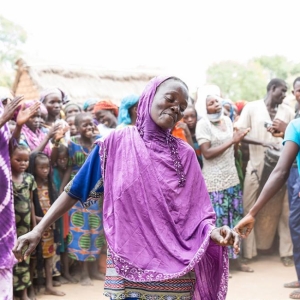Indicators in this domain assess the extent to which migrants have the same status as citizens in terms of access to basic social services such as health, education, and social security. It also describes the rights of migrants to family reunification, to work, and to residency and citizenship. The ratification of the main international conventions is also included within this domain.
Indicators in this category look at the extent to which migrants have access to certain social services such as health, education and social security. They also examine measures to ensure integration and access to work.
Indicators in this domain assess countries’ institutional, legal, and regulatory frameworks related to migration policies. Domain 2 also reviews the existence of national migration strategies that are in-line with development, as well as institutional transparency and coherence in relation to migration management. This domain also investigates the extent to which governments collect and use migration data.
Indicators in this category assess the institutional frameworks of cities for migration. This area also examines the existence of migration strategies consistent with development objectives, as well as institutional transparency and coherence in migration management.
This domain focuses on countries’ efforts to cooperate on migration-related issues with other states and with relevant non-governmental actors, including civil society organizations and the private sector. Cooperation can lead to improvements in governance by aligning and raising standards, increasing dialogue and providing structures to overcome challenges.
Indicators in this category focus on cities’ efforts to cooperate on migration issues with the national government as well as other cities and relevant non-governmental actors, including civil society organizations and the private sector.
This domain includes indicators on countries’ policies for managing the socioeconomic well-being of migrants, through aspects such as the recognition of migrants’ educational and professional qualifications, provisions regulating student migration and the existence of bilateral labour agreements between countries. Indicators equally focus on policies and strategies related to diaspora engagement and migrant remittances.
Indicators in this category assess cities’ initiatives in terms of international student mobility, access to the labour market and decent working conditions for migrant workers. Aspects related to diaspora engagement and migrant remittances are also included in this domain.
This domain studies the type and level of preparedness of countries when they are faced with mobility dimensions of crises, linked to either disasters, the environment and/or conflict. The questions are used to identify the processes in place for nationals and non-nationals both during and after disasters, including whether humanitarian assistance is equally available to migrants as it is to citizens.
Indicators in this category examine the type and level of readiness of cities to deal with aspects of mobility crises. The questions focus on the processes in place for citizens and non-citizens both during and after disasters, especially if humanitarian assistance is available for migrants and citizens.
This domain analyses countries’ approach to migration management in terms of border control and enforcement policies, admission criteria for migrants, preparedness and resilience in the case of significant and unexpected migration flows, as well as the fight against trafficking in human beings and smuggling of migrants. It also assesses efforts and incentives to help integrate returning citizens.
Indicators in this category look at the cities’ approaches to migrant safety as well as return and reintegration policies and the fight against trafficking in persons.
This country Profile describes examples of well-developed areas of the Republic of Fiji (hereafter referred to as Fiji) migration governance structures and areas with potential for further development, as evaluated through the six domains of the Migration Governance Indicators (MGI). These address migrants’ rights, a “whole-of-government” approach, partnerships, socioeconomic well-being of migrants, the mobility dimensions of crises, and safe and orderly migration.
Click the icons on the wheel to explore the key findings.
The Migration Governance Indicators (MGI) initiative is a policy-benchmarking programme led by the International Organization for Migration (IOM) and implemented with research and analysis from the Economist Intelligence Unit. Funding is provided by IOM Member States.
Migration Governance: examples of well-developed areas
- All migrants in Fiji have the same access as citizens to Government-funded health services.
- Family reunification is possible for all migrants.
- Migrant workers have access to the Fiji National Provident Fund.
Areas with potential for further development
- Migrants can be charged higher fees than nationals for higher education and vocational training.
- Foreign residents do not have the same access to employment opportunities as nationals.
Migration Governance: examples of well-developed areas
- The Foreign Employment Service provides support services to nationals seeking work abroad and facilitates their overseas employment.
- The Ministry of Foreign Affairs’ strategic planning documents guide efforts to strengthen diaspora engagement through its diplomatic missions.
- The Fiji Bureau of Statistics collects and publishes some migration data on a monthly basis.
Areas with potential for further development
- Fiji does not have a government agency or department responsible for designing and coordinating the implementation of an overall migration policy or strategic plan.
- While Fiji’s National Development Plan considers migration issues, it is not gender-responsive.
- There is no national legislation in place in relation to emigration.
Migration Governance: examples of well-developed areas
- Fiji is a member of the Pacific Immigration Development Community and the Bali Ministerial Conference on People Smuggling, Trafficking in Persons and Related Transnational Crime among others.
- Fiji has signed a memorandum of understanding with Australia regarding its Seasonal Worker Programme.
- Fiji formally engages civil society organizations in agenda-setting and implementation of migration-related issues through the Technical Working Group (TWG) for Migration.
Areas with potential for further development
- Fiji only engages with its diaspora communities on policy issues on an ad hoc basis.
Migration Governance: examples of well-developed areas
- The Fiji Bureau of Statistics conducts regular national assessments on labour market demand through its annual employment surveys.
- Fiji has programmes to promote the financial inclusion of migrants and their families.
- Fiji takes into account labour migrants’ skills and capabilities when deciding whether to admit them.
Areas with potential for further development
- There are no specific programmes for managing labour immigration into the country.
- Fiji has limited measures that promote ethical recruitment of migrant workers.
- There are no formal remittance schemes in place.
Migration Governance: examples of well-developed areas
- There are communication systems in place to transmit information in several languages on the evolving nature of crises and ways to access assistance.
- Fiji’s Climate Change Act and National Climate Change Policy (2018–2030) address migration linked to environmental degradation and climate change.
- The country’s Displacement Guidelines include measures to manage large-scale population movements in times of crisis.
Areas with potential for further development
- Fiji does not have a strategy with specific measures to provide assistance to migrants before, during or after crisis situations.
- There are only ad hoc measures to make exceptions to immigration procedures for immigrants whose country of origin is experiencing crisis.
Migration Governance: examples of well-developed areas
- The Ministry of Defense, National Security and Policing coordinates border control and security through its Inter-agency Committee.
- The National Human Trafficking Strategy (2021–2026) and the National Action Plan to Combat Human Trafficking (2021–2026) address the protection of victims, prosecution of traffickers and international cooperation.
Areas with potential for further development
- Border staff are not regularly trained on migration-related issues.
- Fiji does not have procedures or policies to identify migrants in vulnerable situations.




